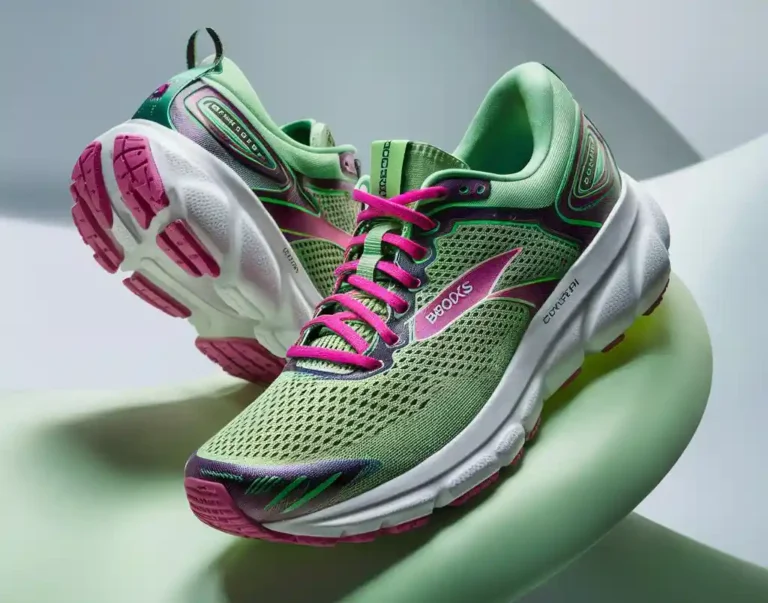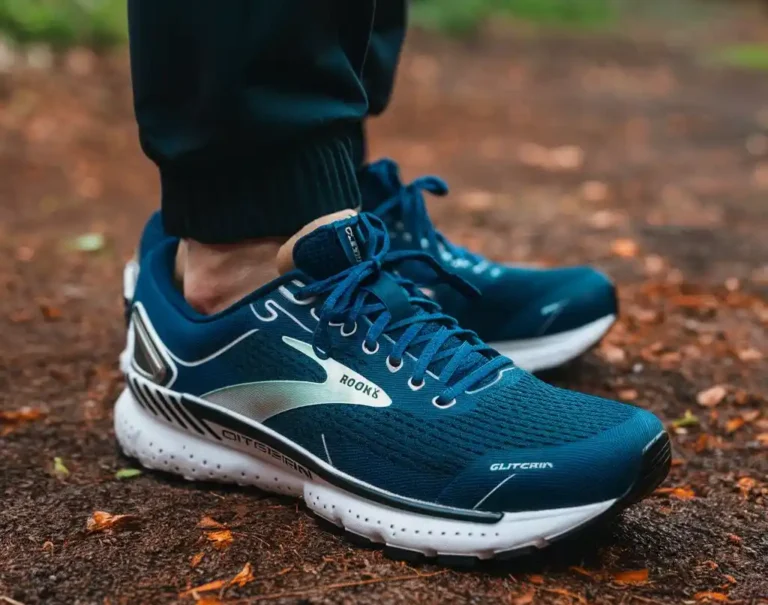Asics Gel Kayano 30 Vs Hoka Arahi 7: a Head-To-Head Comparison
You're in the market for a new running shoe, and two top contenders have caught your eye: the Asics Gel Kayano 30 and the Hoka Arahi 7. Both shoes have their unique strengths, but which one is right for you? On one hand, the Kayano 30 offers a more substantial and structured design, perfect for runners who need support and stability. On the other hand, the Arahi 7 boasts a sleeker, more natural feel, ideal for those who crave a relaxed ride. The question is, which features will make the biggest difference in your running experience?
Key Takeaways
- The Asics Gel Kayano 30 features a more substantial and structured upper, while the Hoka Arahi 7 boasts a sleeker, more minimalist design.
- The Kayano 30's dual-density FlyteFoam midsole provides a more customized ride, whereas the Arahi 7's single-density EVA midsole offers a more uniform feel.
- The Kayano 30 is designed for runners with high arches or plantar fasciitis, providing substantial support and stability, whereas the Arahi 7 is suitable for runners with neutral foot pronation.
- The Arahi 7's lightweight construction and lower heel-to-toe offset promote a more natural stride, while the Kayano 30's heavier and more substantial offset may affect running form and efficiency.
Design and Upper Materials
When you slip into the Asics Gel Kayano 30 and Hoka Arahi 7, the first thing you'll notice is the significant difference in their design and upper materials.
The Kayano 30 features a more substantial and structured upper, while the Arahi 7 boasts a sleeker, more minimalist design.
The Kayano 30's upper construction is comprised of a robust material palette, including a thick, breathable mesh and sturdy overlays, providing a snug, secure fit.
In contrast, the Arahi 7's upper is built with a lighter, more flexible material palette, featuring a seamless, one-piece construction that allows for a roomier, more comfortable fit.
The differing upper materials and construction approaches result in distinct on-foot experiences, with the Kayano 30 offering a more supportive, stable ride and the Arahi 7 providing a more relaxed, natural feel.
Midsole Technology Comparison
You'll find significant differences in the midsole technology of the Asics Gel Kayano 30 and Hoka Arahi 7, with the Kayano 30 featuring a dual-density FlyteFoam midsole and the Arahi 7 boasting a single-density compression-molded EVA midsole.
The dual-density design of the Kayano 30 provides midsole density variations, allowing for a more customized ride.
In contrast, the Arahi 7's single-density midsole offers a more uniform feel.
When it comes to material responsiveness levels, the FlyteFoam in the Kayano 30 is known for its high responsiveness, while the EVA in the Arahi 7 provides a more moderate level of responsiveness.
These differences will affect how each shoe responds to your footstrike and overall running experience.
Cushioning and Ride Experience
The Asics Gel Kayano 30's FlyteFoam midsole and spacious toe box work in tandem to deliver a plush, cushioned ride that softens the impact of each footstrike.
You'll experience a soft landing with each step, thanks to the midsole's ability to absorb shock and distribute pressure evenly.
The responsive bounce from the FlyteFoam also provides a snappy return, propelling you forward with each stride.
In contrast, the Hoka Arahi 7's midsole offers a more maximalist approach, with a thicker, more cushioned ride.
While it provides excellent shock absorption, it can feel slightly less responsive than the Kayano 30.
Support and Stability Features
As you shift your focus from the cushioning to the support features, you'll find that the Asics Gel Kayano 30 is designed to provide a more substantial level of support and stability, particularly for runners with high arches or plantar fasciitis.
The shoe features supportive arches that help to reduce pronation and provide a more stable ride. Additionally, the Kayano 30 has designated stability zones that work to counteract excessive foot movement, ensuring a smoother and more efficient stride.
In contrast, the Hoka Arahi 7 offers a more balanced level of support and stability, making it suitable for runners with neutral foot pronation.
While it still provides some level of support, it's not as substantial as the Kayano 30, making it a better option for those who don't require as much stability.
Weight and Heel-to-Toe Offset
Your weight distribution and stride efficiency are substantially impacted by the shoe's weight and heel-to-toe offset, with the Asics Gel Kayano 30 weighing in at 11.2 ounces and boasting a 13mm heel-to-toe offset, while the Hoka Arahi 7 tips the scales at 10.9 ounces with a 5mm heel-to-toe offset.
The Hoka Arahi 7's lightweight construction and lower heel-to-toe offset allow for a more natural stride, promoting a responsive shift from heel strike to toe-off. This can lead to a more efficient and comfortable running experience.
In contrast, the Kayano 30's slightly heavier and more substantial offset may provide a more stable ride, but may also affect your running form and efficiency.
Consider your personal running style and preferences when choosing between these two shoes.
Traction and Outsole Durability
You'll find significant differences in traction and outsole durability between the Asics Gel Kayano 30 and Hoka Arahi 7, mainly due to their distinct outsole designs and materials.
The Kayano 30 features a more aggressive outsole pattern, which provides better grip on wet roads.
In contrast, the Arahi 7 has a more subtle design, but still manages to deliver impressive trail grip.
When it comes to durability, the Kayano 30's outsole is more resistant to wear and tear, thanks to its high-abrasion rubber.
However, the Arahi 7's outsole is still durable, but may not last as long as the Kayano 30's.
Overall, if you prioritize traction on wet roads, the Kayano 30 might be the better choice.
But if you're looking for a shoe with impressive trail grip, the Arahi 7 is worth considering.
Breathability and Ventilation
When you slip into either shoe, you'll immediately notice the differences in breathability and ventilation, which play a significant role in keeping your feet cool and dry during long runs.
The Asics Gel Kayano 30 features an airy mesh upper that allows for superior airflow, with strategically placed ventilation zones to promote moisture-wicking and evaporation.
In contrast, the Hoka Arahi 7 has a more substantial and denser upper material, which, while still breathable, doesn't quite match the Kayano's level of ventilation.
This difference is particularly noticeable during high-intensity runs or in warmer conditions, where the Kayano's superior breathability will keep your feet feeling fresher and drier for longer.
Fit and Sizing Options
The Asics Gel Kayano 30 and Hoka Arahi 7 differ substantially in terms of fit and sizing options, with the Kayano offering a more snug, responsive ride and the Arahi providing a roomier, more accommodating toe box.
You'll notice the Kayano's narrower heel and midfoot, which can lead to heel slippage if you have a larger heel.
In contrast, the Arahi's more generous toe box and midfoot width make it a better fit for those with wider feet.
Both shoes offer width variations, including narrow and wide options, so you can choose the best fit for your foot.
However, if you prefer a more relaxed fit, the Arahi might be the better choice.
Lacing System and Security
Both shoes employ a lace-up closure system, but the Asics Gel Kayano 30's more substantial, asymmetrical lacing setup provides a snugger, more customizable fit around your foot.
This design allows for a more precise adjustment, ensuring a secure heel lockdown and reducing the likelihood of blisters.
In contrast, the Hoka Arahi 7's lacing system is more conventional, with a slightly thinner lace that may not provide the same level of customization.
However, the Arahi 7's lacing system is still comfortable and easy to use.
When it comes to lace comfort, both shoes perform well, with soft, breathable materials that won't cause irritation.
Color Options and Style
You're spoiled for choice with the Asics Gel Kayano 30, which comes in a whopping 12 different color options, including bold hues like 'Midnight Blue' and 'Flash Coral' that are sure to turn heads.
Whether you're looking to make a fashion statement or express your personal style, the Kayano 30 has got you covered.
From subtle neutrals to vibrant brights, there's a color option to suit every runner's taste.
In contrast, the Hoka Arahi 7 offers a more limited but still stylish range of 6 color options.
While they may not be as bold as the Kayano 30, they're still sure to turn heads with their sleek, modern design.
Ultimately, the choice between these two shoes comes down to your personal expression and what you want to say with your footwear.
Price Point and Value
Considering your budget, vital to weigh the cost of these high-performance running shoes, as the Asics Gel Kayano 30 and Hoka Arahi 7 occupy different price brackets.
The Asics Gel Kayano 30 tends to be pricier, with a premium feel that justifies the higher cost.
If you're on a tighter budget, the Hoka Arahi 7 might be a more affordable option, but you may need to compromise on some features.
However, imperative to remember that you get what you pay for.
If you're willing to invest in your running experience, the Kayano 30 might be worth the extra dollars.
But if budget constraints are a concern, the Arahi 7 still offers excellent performance at a lower price point.
Ultimately, it's about finding the right balance between quality and affordability.
Runner Type and Preference
Your running style and personal preferences play a significant role in determining which shoe is the better fit, as the Asics Gel Kayano 30 and Hoka Arahi 7 cater to different types of runners and offer distinct ride experiences.
If you're a runner with high arches or supination, the Hoka Arahi 7's more substantial heel-to-toe offset might provide a more comfortable ride.
If you're a runner with flat feet or overpronation, the Kayano 30's more supportive and stable design might be a better fit.
Running style: Do you land midfoot or heel strike?
Foot pronation: Do you overpronate, underpronate, or have neutral foot alignment?
Cushioning preferences: Do you prefer a more cushioned or responsive ride?
Support needs: Do you require additional support for your ankles or arches?
Performance on Different Terrains
As you take to varying terrains, the Asics Gel Kayano 30 and Hoka Arahi 7 exhibit distinct performance characteristics that can significantly impact your running experience.
On trails, the Hoka Arahi 7's generous cushioning and soft midsole provide exceptional trail adaptability, allowing you to tackle technical terrain with confidence.
Meanwhile, the Asics Gel Kayano 30's firmer ride and more pronounced heel-to-toe offset make it better suited for road running, where you'll appreciate its responsive feel and snappy turnover.
When it comes to road responsiveness, the Kayano 30 is hard to beat, but the Arahi 7's comfort and adaptability give it an edge on more rugged trails.
Ultimately, your terrain preferences will play a significant role in determining which shoe is right for you.
Verdict and Recommendation
You've now reached a decision-making crossroads, where the unique strengths of each shoe must be weighed against your personal running needs and preferences.
Ponder the following key points to make an informed decision:
Running habits: If you're a heavy heel striker or need more support, the Asics Gel Kayano 30 might be the better choice.
If you're looking for a more cushioned ride and a responsive feel, the Hoka Arahi 7 could be the way to go.
Personal preferences: If you prioritize a snug, secure fit, the Kayano 30 might be the better fit.
If you prefer a more relaxed, comfortable fit, the Arahi 7 could be the better option.
Ultimately, it's crucial to examine your unique running habits and personal preferences when deciding between these two exceptional shoes.
Frequently Asked Questions
Are the Asics Gel Kayano 30 and Hoka Arahi 7 Suitable for High-Arched Runners?
You'll find that high-arched runners need moderate arch support to prevent excessive foot pronation. While both shoes offer decent support, the Kayano 30 provides more substantial arch support, making it a better fit for you.
Can I Wear These Shoes for Daily Casual Walking and Not Just Running?
You can definitely wear these shoes for daily casual walking, as they provide excellent daily comfort, making them suitable walking shoes for everyday use, with features like cushioning and support that will keep your feet happy.
Are These Shoes Machine Washable or Require Hand Washing?
You'll want to check the washing instructions and care labels on your shoes, as machine washability varies by brand and material; for freedom from hassle, hand washing is often the safest bet, but always verify.
Can I Customize the Insoles of the Asics Gel Kayano 30 and Hoka Arahi 7?
You can customize the insoles of both shoes, but options vary; the Asics Gel Kayano 30 offers limited insole material options, while the Hoka Arahi 7 is more orthotics-compatible, giving you freedom to choose the perfect fit.
Do These Shoes Come With a Waterproof or Water-Resistant Treatment?
You'll find that many running shoes, including these two, often feature water repellency features and moisture management technology to keep your feet dry and comfortable, but they may not be fully waterproof or water-resistant.
Conclusion
You've weighed the pros and cons of the Asics Gel Kayano 30 and Hoka Arahi 7.
If you're a runner who needs support and stability, the Kayano 30's structured upper and dual-density midsole make it the better choice.
If you prefer a more natural ride with ample cushioning, the Arahi 7's sleek design and single-density EVA midsole are the way to go.
Ultimately, it comes down to your individual needs and preferences – choose wisely, and you'll be off to a great start.

Mia Smith is the founder of Shoe Storyteller, a blog that celebrates the art and stories behind shoes. With a passion for fashion and a flair for storytelling, Mia brings a unique perspective to the world of footwear.



